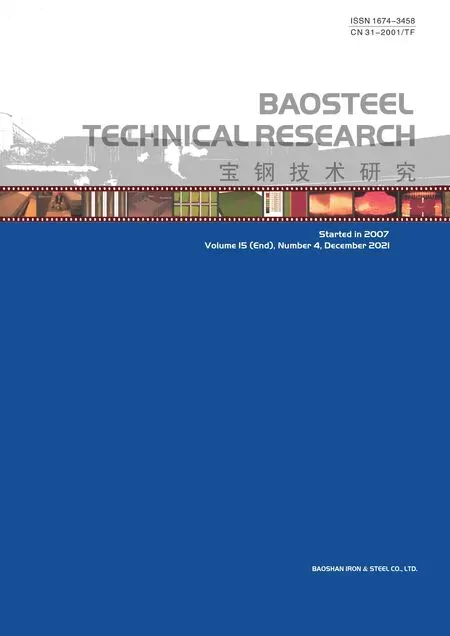Research status of corrosion environment failure and safety assessment of pipeline welded joint
2022-01-19
Research Institute,Baoshan Iron & Steel Co.,Ltd.,Shanghai 201999,China
Abstract: Pipeline transportation is an economical,safe,and efficient transportation method for transporting oil,natural gas,mineral slurry,and other fluids.Welding is the most critical construction process in pipeline engineering and is crucial in the safe operation and service of an entire pipeline system.Theoretically,the girth welded joint is the weakest link in a pipeline system.The unevenness of the structure and performance of the joint caused by welding frequently results in the failure of the welded joint before the failure of the base material of the pipe body,causing the pipeline to leak or even break.For steel pipes used in an acidic corrosive medium environment,the integration of the corrosive medium and mechanical load will accelerate the failure of the welded joint.This article reviews the failure modes of pipeline welded joints in acidic corrosive media,including stress corrosion cracking,hydrogen-induced cracking,and corrosion fracture,and corrosion fatigue considering the diffusion and accumulation of H+ at the crack tip.It also reviews service pipelines in acidic corrosive media.The general processing technology of pipe joint engineering critical assessment (ECA) is investigated to provide a reference for the future development of technology in this field.
Key words: pipeline; welding joint; corrosion; fracture; failure; engineering critical assessment
1 Introduction
Pipeline transportation is a fast,efficient,econo-mical,and safe transportation method for transport-ing oil and gas resources.With the rapid develop-ment of the oil and gas industry in recent years and the rapid increase in energy demand due to this development,the construction of long-distance oil and gas pipelines has also been rapid.The construc-tion of oil and gas pipelines abroad has a long history.Mature pipeline network systems have been constructed and operated stably for many years,either on land or in oceans,and have played a vital role in local economic development and social progress.Although the construction of oil and gas pipelines in China started late,they have demon-strated a rapid development trend in recent years,passing through the second line of West-East Gas Pipeline,the third line of West-East Gas Pipeline,the fourth line of Shanjing,and the East Line of China-Russia.In terms of pipeline construction,China has become the country with the highest amount of high-grade X80 pipeline laying and service in the world[1-2].With the official establishment of the National Petroleum and Natural Gas Pipeline Network Group Co.,Ltd.last year,the investment,planning,design,construction,and operation of China’s long-distance pipelines will be coordinated during the 14th Five-Year Plan period,which will considerably improve the efficiency of pipeline construction and transmission to ensure pipeline interconnection.
On-site circumferential girth welding is the main process and a key link of pipeline construction.Uneven heating and cooling,resulting in nonequili-brium solidification and solid phase transition,are inherent characteristics of welding processing.This also causes the circumferentially welded joint to become the theoretically weakest link in the entire pipeline system; the risk of failure has an adverse effect[3- 4].Failure and destruction of in-service pipe-lines are mainly caused by external loads (including stress and strain,corrosive media,temperature,abra-sive friction,and wear) that exceed the resistance of pipelines to failures.Therefore,studying the correla-tion between the failure mode of pipeline operation and performance is helpful to fundamentally grasp the law of pipeline failure and destruction and develop safe operation guarantee countermeasures according to specific service conditions[5].
For high-pressure oil and gas pipelines,failure modes while in service mainly include ductile frac-ture,brittle fracture,fatigue cracking,stress corrosion (SSCC),and hydrogen-induced cracking (HIC),especially when transporting corrosive media con-taining H2S,CO2,etc.SSCC and HIC sensitivity of a pipeline system will increase under the conditions of external atmospheric and soil pH changes and hydrogen absorption,and it will frequently interact with brittle fracture and fatigue cracking,accele-rating the failure and destruction of pipe circum-ferential welded joints[6].For engineering critical assessment (ECA) of pipeline system construction and operation safety,the BS7910 standard specifies general procedures.Based on the equivalent calcu-lation of service load and linear analysis,the material or structure of pipelines can be calculated for different conservative levels by calculating perfor-mance characteristic parameters,the maximum allowable size of defects under specific conditions can be obtained,and the service life of the structure.However,the standard does not consider the adverse effects of corrosive media environments on structural safety and plays no direct guiding role in the safety evaluation of joints in the service environment of corrosive media.The DNVGL-RP-F108 standard com-bines previous engineering practice experience,especially with reference to the research results of the JIP project planned by DNVGL and cosponsored by the industry,and proposes safety evaluation criteria for pipeline joint fracture and fatigue under acidic cor-rosive medium environments.For example,introducing a typical acidic environment during the test and fatigue crack growth rate (FCGR) test,especially to fully diffuse and accumulate H+at the tip of fatigue cracks,accelerate crack propagation and fracture failure,and use the fracture toughness and FCGR values obtained in the acid environment as the follow-up.The input parameters of the ECA evalua-tion are used to fully consider the effect of an acidic corrosive environment on the safety of pipeline circumferential welded joints.
2 Failure modes of line pipes under various service conditions

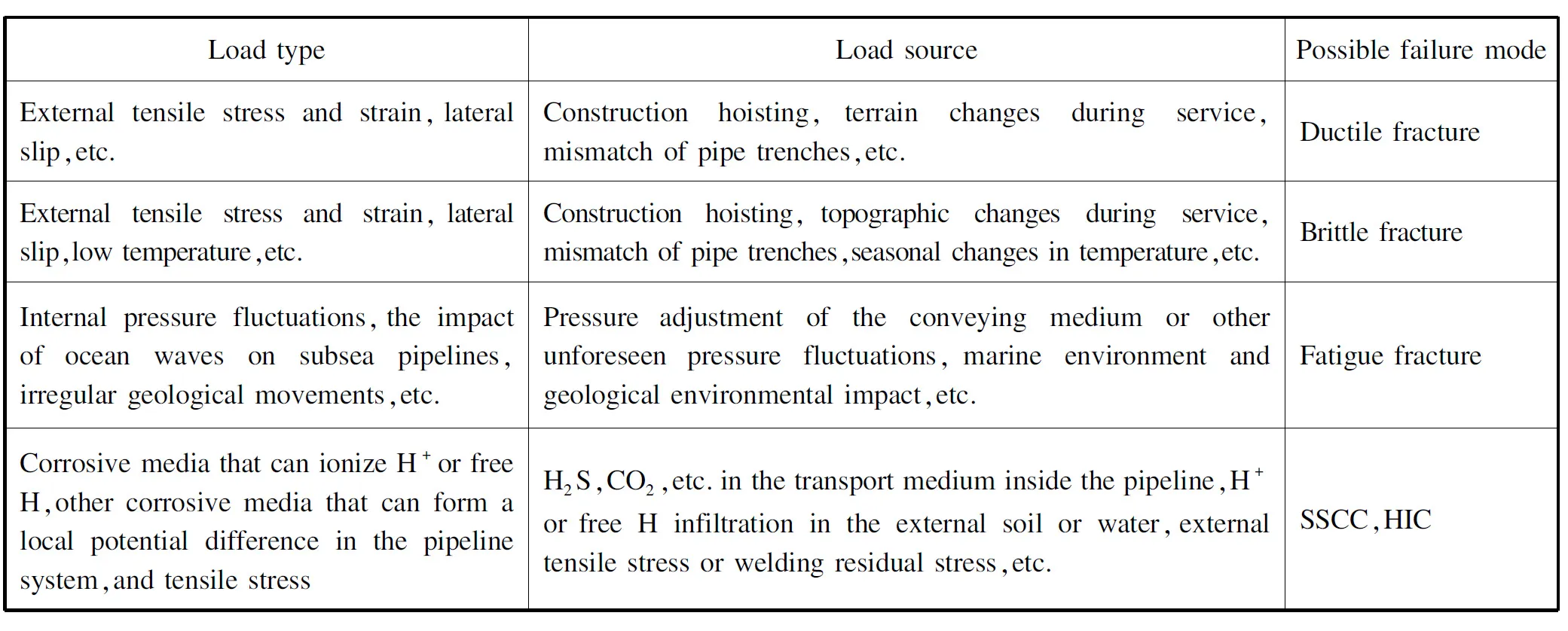
Table 1 Failure modes of pipelines caused by different types of loads
3 Stress corrosion and hydrogen-induced embrittlement
SSCC is a low-stress failure caused by the combined action of tensile stress (external load or welding residual stress) and corrosive media.SSCC is generally believed to be caused by the galvanic effect because of the potential difference between the internal electrodes of the material,causing the dissolution of the anode and the hydrogen-induced embrittlement of the cathode.Therefore,SSCC and HIC can occur simultaneously,as shown in Fig.1.The reaction of the anode (the negative electrode of the primary battery) is M=M++e-,i.e.,more active metals are oxidized and free electrons are released.The reaction of the cathode (the positive electrode of the primary battery) is e-+H+=H,i.e.,hydrogen ions accumulated on the cathode undergo a reduction reaction,generating hydrogen molecules,which diffuse and escape as hydrogen gas.The effect of external tensile stress will accelerate anode dissolution and cathode hydrogen ion accumulation and reduction,increasing SSCC sensitivity[5].
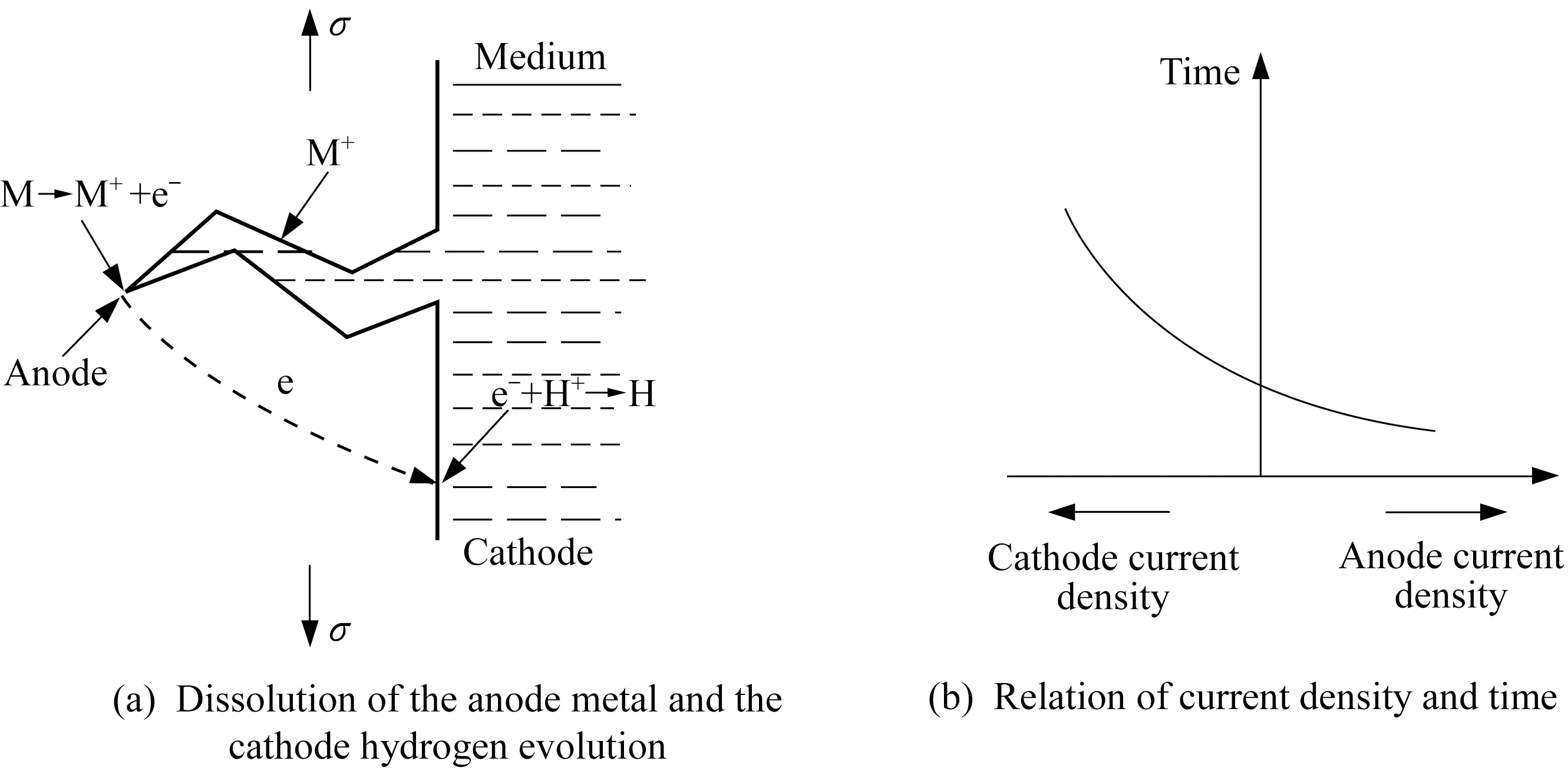
Fig.1 Stress corrosion cracking mechanism
In general,SSCC is quantitatively expressed by the SSCC critical stress field intensity factor (KⅠ SCC,which can be measured by the method of fracturemechanics).When the crack front stress intensityfactorKⅠ>KⅠ SCC,SSCC failure will occur.Existing precrack SSCC test methods conducted for Baosteel’s X80 pipeline are based on the NACE TM 0177 solution (0.5% acetic acid,5% sodium chloride,saturated hydrogen sulfide aqueous solution) and the wedge-shaped expansion load specified in GB 12445.3.Study of the base material of the pipe body,the welding heat-affected zone,KⅠ SCCof the weld metal,and the crack growth rate (da/dt) have been conducted.The results show that the base metal of the pipe body and the weld metal exhibit high resistance to SSCC,which is mainly because of the presence of acicular ferrite with a small size,cross-distribution,large-angle grain boundaries,high-density substructure,and movable dislocations.The element body is related to the structure of the lower bainite.This type of organi-zation has high energy when it cracks in a tensile stress-induced hydrogen sulfide corrosive medium,exhibiting strong SSCC resistance.However,the structure of the coarse-grain zone in the heat-affected zone is mainly granular bainite,coarse lath bainite,and polygonal ferrite.The grains are coarse and have high hardness and can easily be under the combined action of tensile stress and corrosive media,resulting in failure.Overall,the X80 line pipe and its welded joints exhibit high SSCC cracking susceptibility under the corrosion environ-ment of H2S containing Cl-.Because there is a large stress concentration at the tip of the prefabri-cated fatigue crack,H+diffuses and accumulates at the tip of the crack under the action of stress induc-tion,and the microscopic defects,voids,disconti-nuities,and nonmetallic inclusions formed during the welding process also become hydrogen traps.Hydrogen aggregates to form hydrogen molecules,but when the partial pressure of hydrogen is very high and exceeds the fracture strength of the material,failure fracture occurs[8].
A slow strain rate experiment (SSRT),which is a dynamic load experiment method,is used to evaluate the sensitivity of SSCC and can accurately control the two important parameters of strain and corrosion rates.Studies have shown that if the strain rate is very large,the material will not have time for SSCC failure,and plastic fracture will occur.On the contrary,if the strain rate is very low after the corrosion passivation film ruptures,there will be sufficient time for passivation to occur again so that the crack tip metal can avoid the corrosion damage caused by anodic dissolution and cathodic hydrogen evolution.To ensure that no repassivation occurs,the strain rate is reduced,increasing the degree of hydrogen diffusion and accumulation at the crack tip and accelerating the degree of SSCC damage of the material.As the concentration of corrosive media such as H2S increases,the sensitivity of SSCC increases.From the perspective of electro-chemical corrosion,the welded joint area has a large structure,small welding defects,and structural discontinuities,and there is a high welding residual tensile stress.Even if the chemical composition of the weld and the base metal of the pipe body is close,the potential of the weld area is also lower than the base material of the pipe body; when the galvanic cell reaction occurs,the weld is preferen-tially corroded.Moreover,the surface area of the weld is considerably smaller than the base material of the pipe body.This small anode (weld seam) and large cathode (pipe base material) galvanic effect will accelerate the corrosion in the weld area[9].
Currently,the NACE A standard solution is generally used in the four-point bending constant load SSCC sensitivity evaluation test commonly used in the industry.However,current studies have shown that the NACE A standard solution is uncon-ducive for carbon steel and low-alloy steel pipes.Because corrosion-resistant steel pipe or bimetal composite pipe is commonly used as a conveying medium with high H2S content to convey media to the treatment station,the H2S content of the treated conveying medium is greatly reduced.From the perspective of suitability for use,developing a new SSCC test solution that meets the actual use place to reduce the conservativeness of the evaluation results is necessary.Through SSCC sensitivity assessment of different corrosive medium environments,critical corrosion solution conditions suitable for different corrosive medium service occasions are found[5,10].
HIC is a very complicated process,and several studies have been conducted on the mechanism of hydrogen-induced embrittlement.Hydrogen atoms in metal materials or welded joints are generally believed to tend to accumulate in the three-dimensional stress concentration area inside the structure under stress,including cracks or notch tips,grain boundaries or phase interfaces,disloca-tion accumulations,and strain concentrations.As the concentration of hydrogen atoms increases,on one hand,fracture may happen due to excessive internal pressure,and on the other hand,the bonding force of the crystal grains or the phase interface may be reduced,thereby causing a brittle fracture.The hydrogen in the welded joint may come from the base metal or welding material or from the penetration of the external environment.The harm to the joint is even greater when there is an interac-tion between SSCC and HIC[5-6].Fig.2 shows the HIC mechanism.
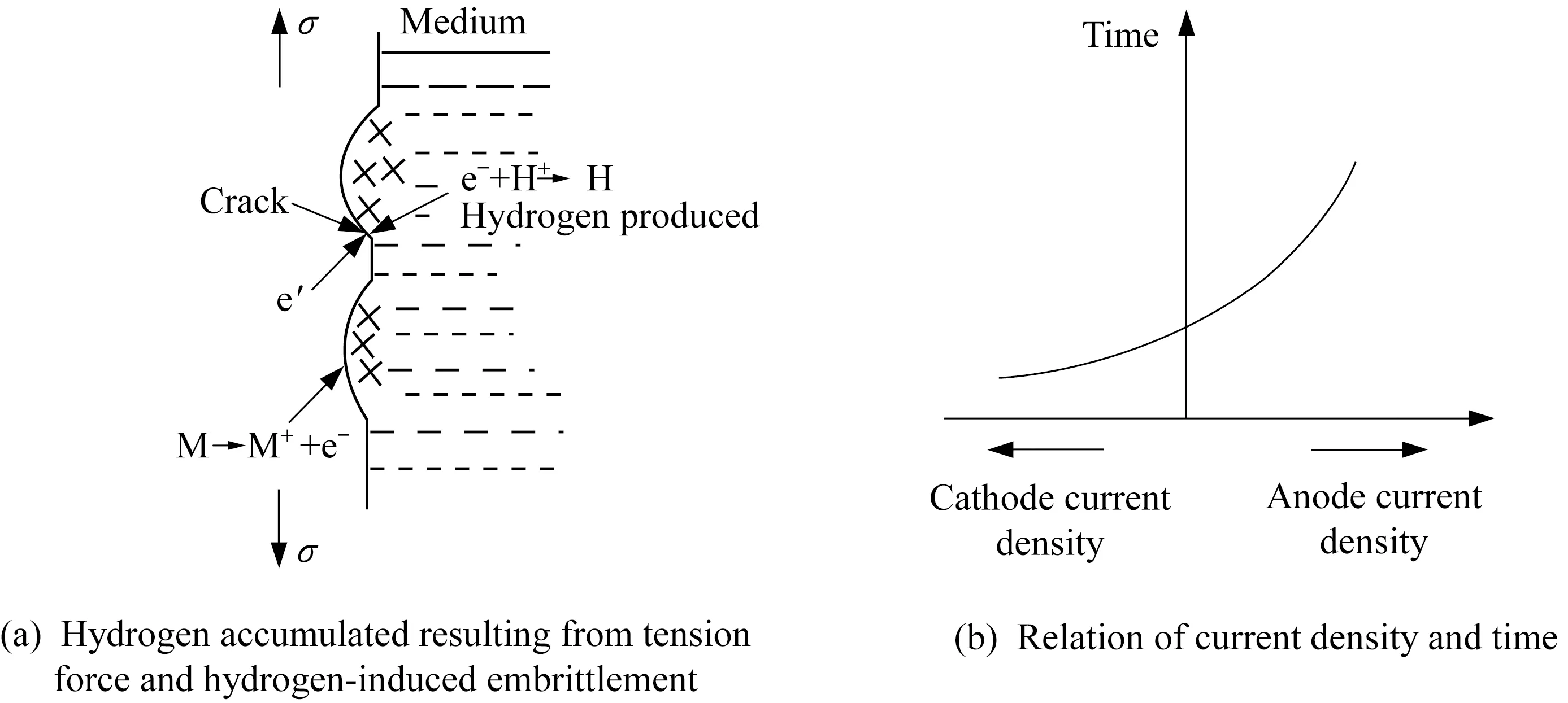
Fig.2 Hydrogen-induced embrittlement and cracking mechanism
Studies have shown that factors such as the hydrogen concentration in an environment,the exposure time of the material or structure in a hydrogen atmosphere,and the state of the material or structure have an important effect on HIC.By electrochemically charging hydrogen in solutions with different pH values and evaluating the effect on the mechanical properties of X70 pipeline steel materials,the sensitivity to hydrogen embrittlement increases with a decrease in the simple pH value and the extension of hydrogen charging time.In particular,solute atoms,vacancies,dislocations,grain boundaries,and inclusions in materials are high-energy hydrogen traps,which are critical in hydrogen damage to materials or structures.However,scanning electron microscopy and energy spectrum analysis of actual X70 pipeline steel conducted after the electrochemical hydrogen charging test found that there is no necessary connection between nitride and HIC behavior,and the oxides of Ca,Al,Mg,and the sulfides of Ca affect HIC and have adverse effects.This also provides important guidance for future material design in this field[11].
4 Engineering critical assessment of pipeline joint in acidic medium corrosion environment
ECA is based on the principle of suitability,fracture mechanics,material mechanics,elastoplastic mechanics,and reliability system engineering,with the premise that there may be shape and size variations,performance index deviations,and macro defects in the welded structure.To ensure that the structure does not experience any foreseeable accidents such as brittle failure,fatigue failure,and SSCC failure during construction and service,equi-valent stress analysis,fracture mechanics analysis,material test,quality inspection,nondestructive flaw detection,and other processes are used.The ECA evaluation method based on the BS7910 standard is widely recognized by the industry[12-13].
The BS7910 assessment method is based on fracture mechanics and uses a failure assessment diagram (FAD) for assessment.According to the theory of fracture mechanics,when there are defects such as cracks in the loaded structure,the crack tip generates a driving force,causing the crack to grow.This driving force is called the stress intensity factor (KⅠ),which is positively related to the load on the structure and length of the crack.The toughness of the material or itself will resist the crack propagation at the crack tip,i.e.,the fracture toughness of the material (KI c,CTOD,J).When the stress intensity factor is less than the fracture toughness of the material,the crack is in a stable state and does not propagate;otherwise,the crack continues to expand until the structure is destroyed.Based on the BS7910,ECA can be divided into 1-3 levels according to the amount of data used and the degree of conservativeness.The higher the level,the more data required and the lower the degree of conservativeness.
By analyzing the actual load,the location of the defect,and the material performance of the structure containing the defect,abscissa,and ordinate of the evaluation point are obtained through calculations,and the position of the point in the FAD is determined.If the assessment point is located in the area enclosed by the coordinate axis and FAD curve,the defect is acceptable; otherwise,the defect is unacceptable.A typical FAD curve for secondary assessment is shown in Fig.3.
However,for the ECA assessment of welded joints of line pipes in the corrosive environment of acidic media,the BS7910 standard is not consid-ered,and there is no input path for service perfor-mance and data in acidic environments.The impact of the acidic environment on the overall safety of a joint can be considered using the material or structural fracture toughness value obtained in the acidic environment as the input condition.The fracture toughness evaluation of joints in acidic environments has not been found in the domestic published reports.The DNVGL-RP-F108 standard specifies the application guidelines for ECA assessment of line pipe welded joints under an acidic medium corrosive environment,focusing on the most important input parameter in the ECA assessment process-material or structural fracture toughness when performed in an acidic environ-ment.The test reflects the adverse effect of H+accumulation at the tip of the prefabricated fatigue crack in the acidic environment on the subsequent loading fracture process,and this is used as the material performance parameter evaluated by ECA.Based on previous practical experience and the research results of the JIP project,the standard has parameters such as the pH range of the immersion test solution for fracture toughness specimens after the fatigue crack,the external H2S partial pressure,temperature,surface protection other than the crack,and the strain loading rate.Guiding suggestions are proposed with complete operability.Furthermore,for applications in acidic corrosive environments and fatigue-sensitive situations,an acidic environ-ment FCGR evaluation method is proposed,and the effect of the stress intensity factor amplitude (ΔK) on crack growth and passivation closure and dynamic load is evaluated.The effect of frequency on FCGR,the interaction of corrosive media and fatigue load,etc.,is also evaluated.The FCGR value obtained under this condition can be used as the material performance input parameter for the subsequent ECA evaluation of the dynamic load in the acid service environment.
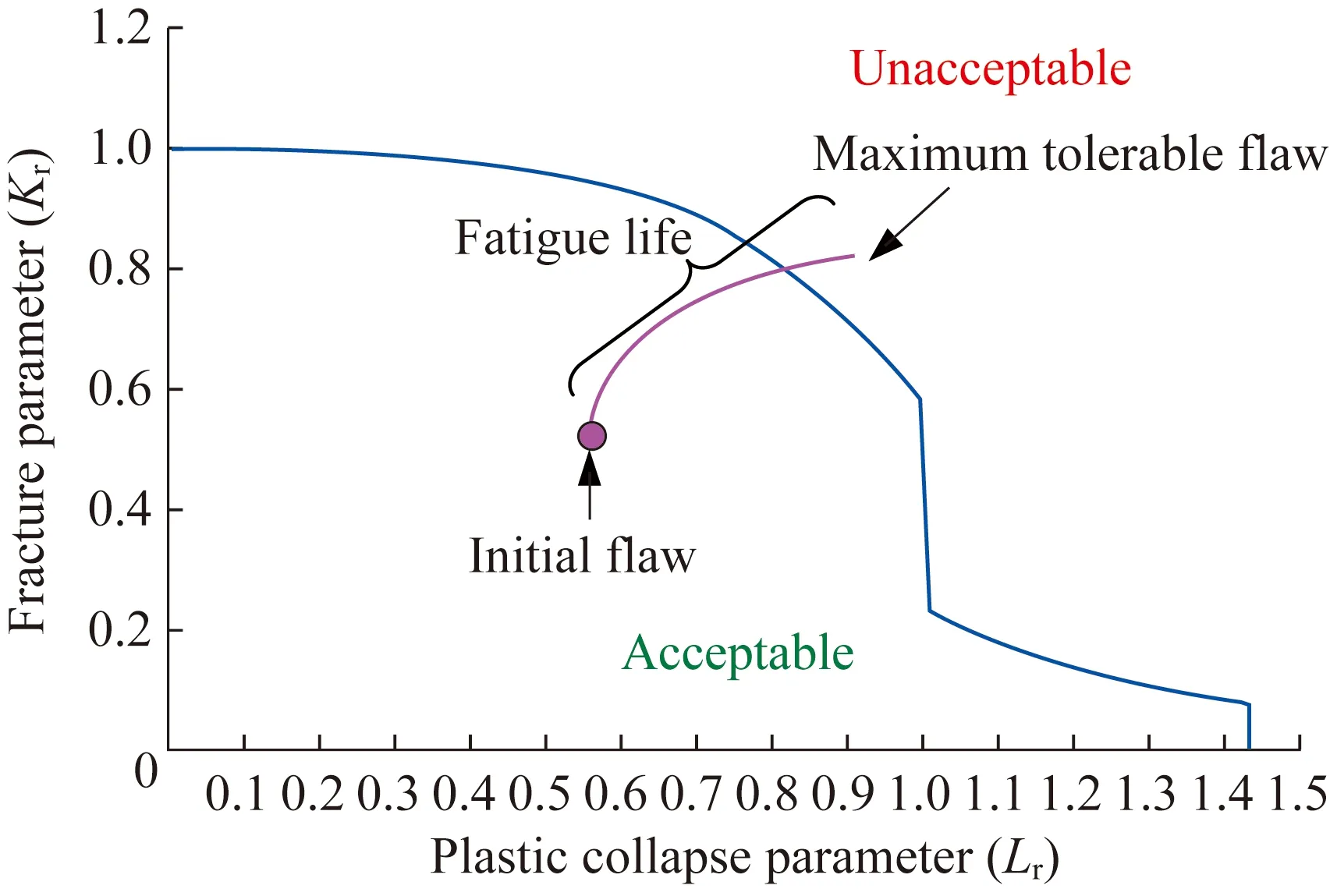
Fig.3 FAD curve of the secondary evaluation of ECA based on the BS7910 standard
5 Work that needs to be continued in the future
With the increased speed of oil and gas resource extraction,there will be more oil and gas explor-ation and transportation with corrosive media in the future.Therefore,the safety and failure behavior of oil and gas pipelines,especially circumferential welded joints,in acidic corrosive media need to be continuously studied.Systematic research,including brittle fracture,corrosion fatigue,and adverse effects of SSCC and HIC interactions of ring welded joints in an acid service environment,along with actual corrosive medium characteristics,eval-uates the suitability of the current NACE standard solution to accurately reflect the actual service con-ditions of line pipes.Along with the large-size or entire pipe test evaluation,comprehensive analysis is performed from the perspectives of electro-chemistry,fracture mechanics,and systems engin-eering for the interaction of SSCC,HIC,and fatigue and fracture to improve the overall safety of the oil and gas pipeline system in the future and reduce design,construction,and operating costs to provide technical assistance.
杂志排行
Baosteel Technical Research的其它文章
- Influence of shielding gas on the transfer behavior of droplets
- Microstructure and properties of laser-arc hybrid welding of high-strength low-alloy steel
- Hot cracking susceptibility research in BTW1 austenitic high-manganese wear-resistant steel
- Analysis of inclusions and precipitates in tough weld metal of X80 steel
- Influence of different microstructural features on impact toughness and crack initiation behavior of coarse grain heat-affected zone in X80 pipeline steel
- Preface
